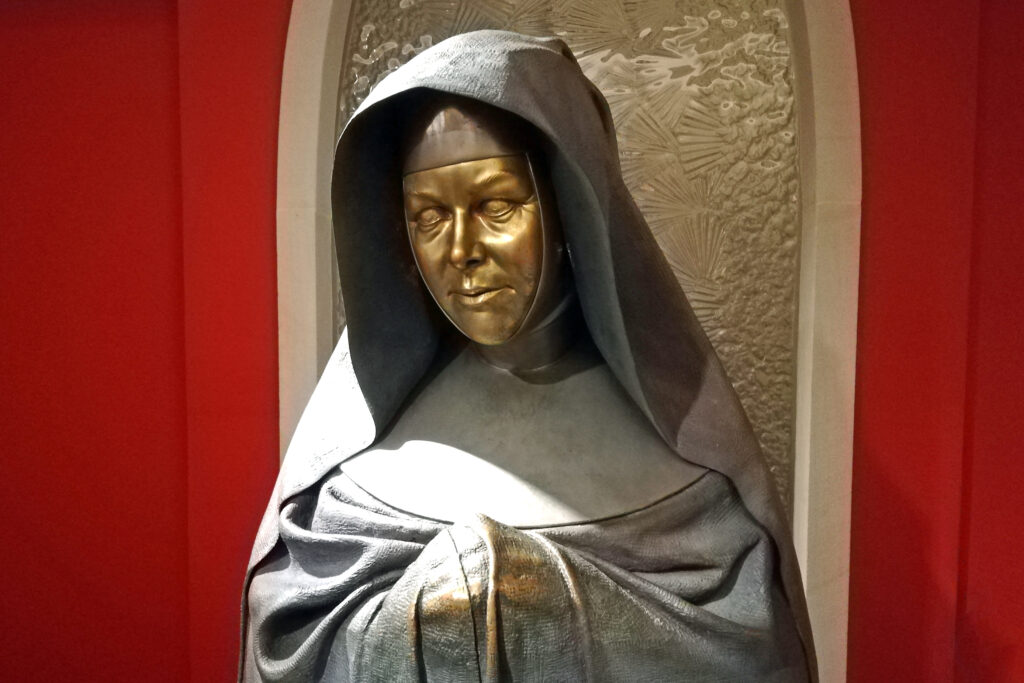
A frequently quoted and a compelling invitation from the Vatican II Council is to “read the signs of the times”. For the many Catholics who heard or read this in 1965, it had an edge of newness about what it meant to be a follower of Christ, as it called for a more creative and relevant way of being in mission. However, as we explore our Catholic Tradition, we find that many of the great men and women of faith who have gone before us, were experts in reading the “signs of the times”.
Saint Mary MacKillop was one such person who did this with clarity and conviction. The fledgling colony of Australia into which Mary was born in 1842 was expanding. Education systems were beginning to take root. However, access to these schools varied, and was largely dependent on one’s social class and economic resources.
As a sensitive and intelligent woman, Mary was deeply aware of what Vatican II called “the joys and hopes, the griefs and anxieties” (Gaudium et spes) of the people of her time – the late 19th and early 20th centuries. She knew that people being born or migrating to this new land carried hopes and dreams for a better future. Yet many were at risk of exploitation and without systems of guidance and support, found themselves in the cycle of poverty.
Mary rightly believed that the way to break this negative sequence was through education. From very humble beginnings in Penola, South Australia, Mary along with Father Julian Tenison Woods, set up a vast network of schools. She was intentional in establishing these schools in the country areas. Her hope was to provide education to the underprivileged, particularly in Australia’s outlying regions.
Thus from its inception, Catholic education was an act of prophetic courage, defiance and an alternative vision of social inclusion. It came into existence because – in the words of Mary MacKillop – our pioneers ‘saw a need and decided to do something about it’. That unmet need was the poor, the unmarried mothers, the underprivileged, and whose who could not have afforded a quality education for their children, otherwise.
As such, Mary foreshadowed the words and actions of Pope Francis. Her assuring words to her Sisters, “there where you are, you will find God” (1871), has somewhat of an echo of the words of Pope Francis, “go to the margins there you will find places of possibility” (2017). In fact, it was in going to the margins of the Australian colony that Mary and her Sisters found possibilities for increasing the life chances of the poor, the unemployed, the indigenous and the homeless. Such actions flowed from her understanding of social justice which for Mary was firmly grounded in love, compassion and empathy.
One piece central to Mary’s life which crossed the boundaries of time was the Cross. She is honoured and embraced as a woman of faith who lived by her unwavering belief in the Crucified Jesus. Her own life was marked by the tragedy of human loss, misunderstanding and rejection. Mary’s loving acceptance of the experience of darkness, suffering and Crucifixion at points throughout her life, strengthened her resolve, her faith and her capacity to forgive.
When Mary was canonised in 2010 there was heartfelt agreement among the Australian people that she had been honoured in the best possible way. She emerged in their memory as one who was “true blue” because she lived authentically and endeavoured to cross the boundaries of race, religion, gender and social class. People from a variety of backgrounds and world views, experienced a connection with her deeply human way of being and doing.
So, in this year of Jubilee as we celebrate her feast day, we recognise in Mary the true heart of a pilgrim. Her story abounds with compassion, selflessness, resilience and the power of faith-driven action. One of the lasting fruits of her legacy is that even in a complex society like ours today, one person’s steadfast dedication and belief, can after one and a half centuries, leave a lasting impression and charter a way for future generations.
Bishop Vincent Long OFM Conv
Diocese of Parramatta
